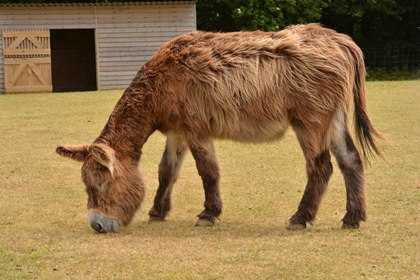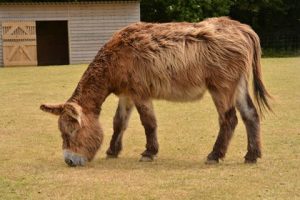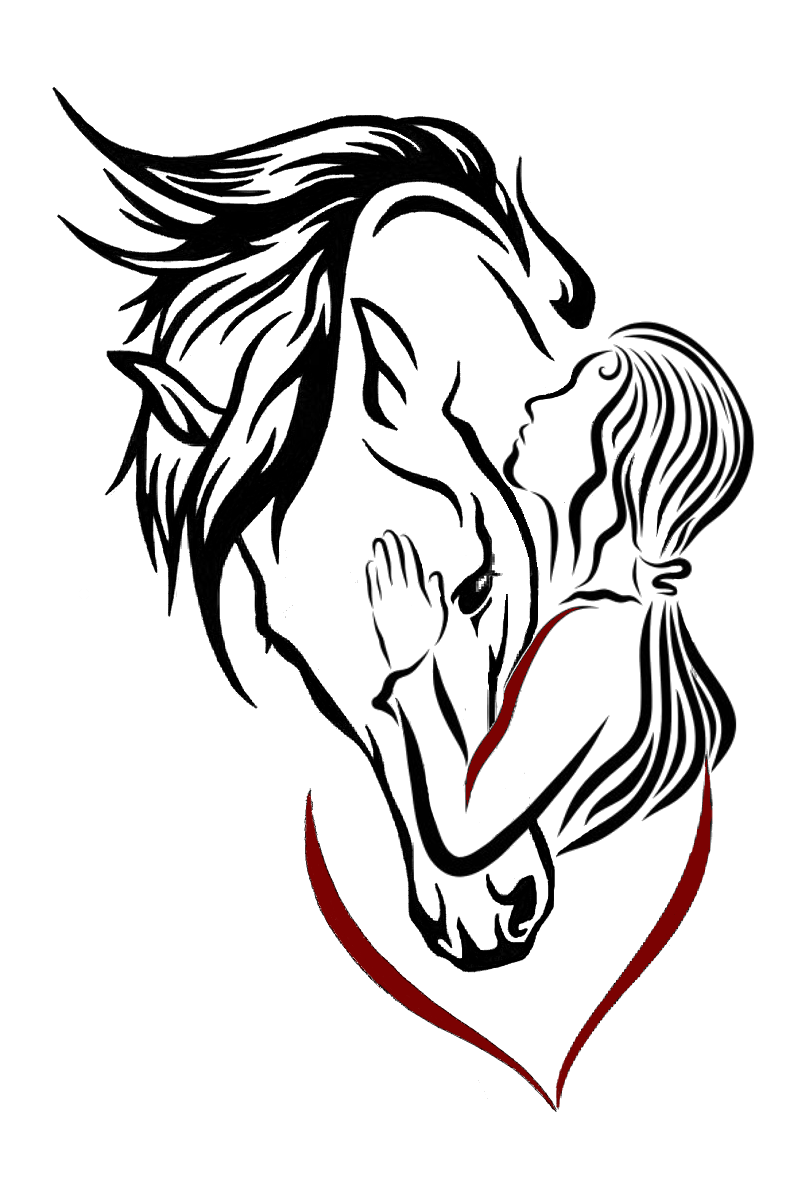Donkeys’ Unique Nutritional Needs


Just like in horses, forage needs to be the foundation of a donkey’s diet. However, their specific forage needs are a little different than those of your horse. To avoid getting in to trouble it’s important to understand these differences. Without careful management, donkeys are prone to obesity, metabolic issues, and laminitis.
Forage in the arid regions from which donkeys originate is sparse and of very low nutritional value. As a result donkeys have a number of unique adaptations that allow them to survive in such areas. The first adaptation is that feed passes through their digestive systems as a slower rate than it would through the tract of a horse or pony. This allows for greater digestion and absorption of nutrients, because feed is in contact with digestive enzymes and hindgut bacteria for a longer period of time. It’s a good thing if you’re consuming feeds of very low nutritional value but becomes a management challenge for owners when higher quality forages are fed.
As a result of this adaptation, donkeys show higher percentage-digestibility for protein and various fiber fractions of feeds than ponies. As the nutritional value of the tested feeds decreases the relative digestibility of these feeds when consumed by donkeys increases as compared to ponies. With an understanding of some of the donkey’s key survival adaptations, it becomes clear why these loveable animals can pose such a management challenge in developed areas where feed quality is high and readily available.
Water Needs
Typically, if water intake is limited, horses and ponies reduce their feed intake. This is true for donkeys too, but what’s interesting is that unlike horses and ponies the digestibility of the feed that is consumed increases instead of decreasing. Donkeys also conserve water by decreasing their resting metabolic rate during periods of dehydration, which decreases water needs for thermoregulation.
Recycling Nitrogen
Another key adaptation is the donkey’s ability to internally recycle nitrogen, which is something horses and ponies can’t do. Horses and ponies excrete excess nitrogen as urea by the kidneys. However, donkeys can resorb this urea and reuse the nitrogen and they can up and down regulate this mechanism depending on the level of protein in the diet and how much nitrogen they need. In fact, when dietary protein levels are very low—as they often are in a donkey’s native habitat—the donkey might get the majority of its nitrogen from this recycling system. Crude protein requirement for donkeys is thought to be somewhere in the range of 3.8-7.4% of the diet compared to 8-12% percent for mature horses.
Donkeys Eat Grass, Browse, and Forbs
Because food availability in their native settings is sparse (think arid, desert regions) donkeys in such environments don’t only eat grass. They happily eat browse (woody shrubs, trees, and broadleaf plants) and forbs (flowing plants) as well. Donkeys have such a strong desire to browse that they can become quite destructive when forage is limited and sometimes even when it’s available free choice. Providing sources of browse, such as brambles as well as tree branches and twigs, from safe tree species can give a donkey something to do and reduce destructive tendencies.
Forage and Fiber
The key to successful donkey nutrition is to find high-fiber forages of low nutritional value. An ideal choice is clean straw, which in many ways is the most similar choice to feeds donkeys would find in their native environments. Straw tends to be lower in calories than even mature grass hay—0.73 to 0.8 Mcal per pound versus 0.8 to 1.0 Mcal per pound respectively. The lower the calorie content the more you can feed.
Straw is also far lower in protein than a typical grass hay and, certainly, donkeys should not be fed alfalfa due to its significantly higher protein content. However, the thought of feeding straw often does not sit well with owners, especially if they are more familiar with feeding horses hay and using straw as stall bedding. Even if you want to feed straw you might have a hard time finding straw that is clean enough for consumption. The Donkey Sanctuary (a globally recognized authority in the management and care of donkeys) has found barley straw to be the best choice for healthy donkeys. Wheat straw is more fibrous and difficult to chew, making it less suitable for very young donkeys or donkeys with poor dentition. Oat straw is more digestible and can cause weight gain.
Depending on the donkey, straw might make up 100% of the diet or be fed in combination with other forage sources such as pasture. Pasture is beneficial as it allows movement, which is important for the donkey’s overall health. However many improved pastures are too high in nutritional value and unrestricted access will likely lead to obesity, especially in the spring and summer. Limited turnout or utilizing strip grazing can work well when grass is abundant. Grazing at times when sugar content is lower is also recommended. Allowing pasture grasses to mature and go to seed so that nutritional value is lower is another useful tool. Even when pasture is readily available, maintaining at least 50% of the forage as straw is advisable.
If enough clean straw is not easily available, opt for a very mature grass hay. Looking for hays with a greater proportion of stems than leaves will insure a lower nutritional value. Ultimately, though, the best assessment of suitability is to have hay analyzed. Every batch of hay and straw is different even when it comes from the same fields. Certainly getting any amount analyzed will give you some general information that can be useful; but ideally you should have every cutting tested to account for variation.
Ideally, all donkeys should be maintained on a diet low in starch and sugars. Therefore knowing the starch and sugar level of the forages you are feeding is important. Generally experts advise that horses and ponies sensitive to nonstructural carbohydrates be fed no more than 12% on a dry-matter basis; donkeys likely need even less than this.
When creating diets for a horse, nutritionists generally consider neutral detergent fiber (NDF, the most common fiber measurement used for animal feed analysis) levels below 40% excellent and those more than 65% unlikely to be eaten. Acid detergent fiber (ADF, the cell wall portions consisting of cellulose and lignin; ADF relates to the animal’s ability to digest the forage) values over 45% for horses have little nutritive value and below 31% are considered excellent. However, for donkeys, with their specific adaptations for consuming high fiber forages, NDF percentages in the low 70s are ideal. Typically as the amount of NDF and ADF in a hay increases crude protein level decreases, making this an ideal scenario for donkeys.
Left to their own devices, donkeys have an appetite to consume between 1.3-1.8% of their body weight per day in dry matter. It’s therefore important when limiting forage intake not to feed forage at an amount below the lower end of this intake range.
Supplementation
Just like your horses, your donkeys will need a source of micronutrients, such as trace minerals, and vitamins to compliment their forage. Ration balancers typically fed to horses and ponies for this purpose are not generally suitable for donkeys due to the additional calories they add to the ration and the fact that additional unnecessary protein. Ration balancing supplements with a 3- to 4-ounce serving size are typically a better choice.
